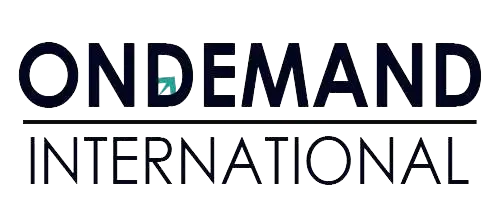
Expanding your business to a new country can be a big decision, and Canada is one of the best places to do it. Why? Because Canada offers a stable economy, a business-friendly environment, and great opportunities for foreign investors. If you’re looking for a flexible and tax-efficient way to start your business in Canada, a Limited Partnership (LP) might be the perfect option for you.
A Limited Partnership (LP) is a special type of business structure where one partner manages the business (general partner) while other partners invest money but don’t get involved in daily operations (limited partners). This setup allows business owners to run operations efficiently while attracting investors who want to contribute without taking on full liability. It’s a widely used structure in industries like real estate, venture capital, and private equity.
If you’re thinking about expanding your business to Canada, this guide will walk you through everything you need to know about how to set up a Limited Partnership in Canada, the benefits, requirements, and the step-by-step process. Let’s get started!
What is a Limited Partnership in Canada?
A Limited Partnership (LP) is a business structure that consists of at least one general partner and one or more limited partners:
- General Partner(s): Accountable for managing the business and personally liable for its debts and obligations.
- Limited Partner(s): Investors who contribute capital but have limited liability and no management role.
Unlike a General Partnership, where all partners share liability, an LP allows limited partners to protect their personal assets, making it an attractive option for foreign investors.
Key Features of a Limited Partnership
-
Distinct Partner Roles: A Limited Partnership clearly defines responsibilities, with general partners managing day-to-day operations and limited partners providing financial support without involvement in management.
- Limited Liability: Limited partners enjoy protection from debts beyond their capital contribution.
- Pass-Through Taxation: LPs are not taxed as separate entities; profits and losses are passed through to the partners and subject to individual taxation.
- Flexibility in Contributions: Partners can contribute assets, skills, or funds, depending on the agreement.
Why Choose a Limited Partnership in Canada?
1. No Residency Requirement
Foreign entrepreneurs can set up an LP in Canada without needing Canadian residency. The general partner can be a foreign entity, making it an excellent vehicle for international investors.
2. Limited Liability for Investors
Limited partners are only accountable for the amount they contribute. This structure minimizes financial risk and protects personal assets.
3. Tax Efficiency
An LP is a flow-through entity, meaning the business itself does not pay corporate taxes. Instead, profits and losses are distributed to the partners, who report them on their tax returns. This setup can lead to tax efficiencies, especially for foreign investors.
4. Ease of Formation and Management
Compared to corporations, Limited Partnerships have fewer compliance requirements, making their management simpler and more economical.
Step-by-Step Process to Set Up a Limited Partnership in Canada
The process of setting up a limited partnership in Canada is as follows:
Step 1: Choose a Province for Registration
Limited Partnerships in Canada are registered at the provincial level.
Some of the most popular provinces for setting up an LP include:
- Ontario (Home to Toronto, Canada’s financial hub)
- British Columbia (Preferred for international business structures)
- Alberta (Business-friendly tax policies)
- Quebec (Strong presence in tech and finance sectors)
Step 2: Select a Business Name
Your company name needs to be distinct and adhere to local naming regulations. You can conduct a name search through NUANS (Newly Upgraded Automated Name Search) to check for availability.
Step 3: Appoint General and Limited Partners
- A general partner can be an individual or a corporation and is responsible for managing the business.
- Limited partners are investors who provide capital but do not participate in management.
Step 4: Draft a Limited Partnership Agreement
Although not legally required, drafting a Limited Partnership Agreement (LPA) is highly recommended. This document outlines:
- Contributions and profit-sharing
- Management responsibilities
- Dispute resolution
- Exit strategies for partners
Step 5: Register with Provincial Authorities
Each province has different filing requirements. Generally, you need to submit:
- A completed Limited Partnership Registration Form
- The business name approval document
- Details of general and limited partners
- Registration fees
Step 6: Obtain Business Licenses and Tax Accounts
Depending on the nature of your firm, you might require:
- A Business Number (BN) from the Canada Revenue Agency (CRA)
- A Goods and Services Tax (GST)/Harmonized Sales Tax (HST) account
- Additional licenses and permits based on your industry
Step 7: Open a Business Bank Account
You must open a business bank account to manage your company’s financial transactions.
Speak with an Expert
Book free end-to-end expert consultation with OnDemand International business experts

Contact Us
Documents Required to Register a Limited Partnership in Canada
To register a limited partnership in Canada, here are the documents that must be provided:
- Name of the partnership firm and business activities that the partnership firm will engage in.
- Partnership Agreement
- Name and details of the general partner
- Name and details of the limited partner
- The business address where you open a limited partnership in Canada
- Details of all minutes and related documents
Requirements to Register a Canadian Limited Partnership
There aren’t many conditions that need to be satisfied in order to establish a limited partnership in Canada.
Entrepreneurs who want to open a limited partnership in Canada have to meet the criteria listed below:
- A limited partnership in Canada must have a minimum of two members, who may be either natural people or corporations.
- A general partner who will be held fully responsible for the obligations of the firm is required to register a limited partnership in Canada.
- Limited partners are required to establish a limited partnership in Canada, however, their culpability for the debts of the partnership is restricted.
- In Canada, there isn’t any limitation on the required amount of initial capital for a limited partnership. It is up to the partners to decide how much money they want to put into the partnership.
- There aren’t any residence requirements for partners to open a limited partnership in Canada.
Benefits of Setting Up a Limited Partnership in Canada
1. Liability Protection
Limited partners enjoy liability protection, making this structure appealing to investors who want to limit their risks.
2. Tax Efficiency
Income generated by the LP is not taxed at the entity level. Rather, each partner avoids double taxation by declaring their portion of profits or losses on their own tax returns.
3. Attracts Investors
The structure is designed to attract passive investors by offering limited liability, making it popular for real estate projects, investment funds, and startups.
4. Flexibility in Partnership Agreement
The partnership agreement can be tailored to meet the unique needs of the business, outlining the roles, responsibilities, and profit-sharing arrangements.
5. No Residency Requirement
Limited partners do not need to be Canadian residents, making LPs ideal for foreign investors.
Want to know more about the benefits of registering a limited partnership in Canada? Read our complete guide now.
Limited Partnership vs Other Business Structures
| Feature | Limited Partnership (LP) | General Partnership (GP) | Corporation |
|
Liability Protection |
Limited for limited partners |
None |
Full |
|
Taxation |
Pass-through |
Pass-through |
Double taxation possible |
|
Management Flexibility |
General partners manage |
Joint management |
Managed by directors |
|
Ease of Setup |
Moderate |
Easy |
Complex |
|
Investor Appeal |
High |
Low |
High |
Conclusion
There are many different sorts of enterprises available to foreign business owners who desire to start their enterprise in Canada. Among these one of the easiest is to register a limited partnership in Canada. An LP is a form of partnership firm that has two or more individuals. In order to register a limited partnership in Canada, general and limited partners are necessary. Additionally, business owners setup a Limited Partnerships in Canada to minimise taxes.
To setup a Limited Partnership in Canada, get in touch with our business professionals at OnDemand International. Our professionals will assist you with the registration process and will provide every necessary detail on how to open a Limited Partnership in Canada.
FAQ’s
A Limited Partnership is exempt from filing tax returns and paying income taxes in Canada. Rather, the net profit or loss of the company is reported on every member’s individual ITR.
- It is managed by a sole general partner who is solely responsible for all debts of the firm.
- The financial contributions made by the limited partners serve as a ceiling on their liabilities.
- Limited partners make a financial contribution but are not permitted to govern the business.
A Limited Partnership is the best business structure to avoid taxes in Canada for Mexican nationals. This is because a limited partnership in Canada is not subject to Canadian corporate income tax, making it a tax-efficient vehicle for foreign investors.
Here are the benefits of a limited partnership in Canada for American entrepreneurs
- Pass-through taxation: An LP does not pay corporate taxes at the partnership level. Instead, profits and losses pass through to the individual partners, who report them on their personal tax returns. This avoids double taxation.
- Simple to set up: Canadian LPs are relatively easy to set up and have fewer reporting and regulatory requirements than corporations.
- In Canada, a limited partnership must have at least 2 partners, who can be either natural people or corporations.
- In Canada, there isn’t any restriction on the required amount of initial capital for a limited partnership.
- There aren’t any residence requirements for partners to open a limited partnership in Canada.
Canada has a large number of FTAs with many nations around the world. With regards to global competitiveness, the World Economic Forum has ranked Canada as the 14th most competitive country.
It is simple for firms to export their goods and services globally due to Canada’s outstanding transportation infrastructure, including its rail infrastructure and maritime systems. All these are the numerous advantages of doing business in Canada.

